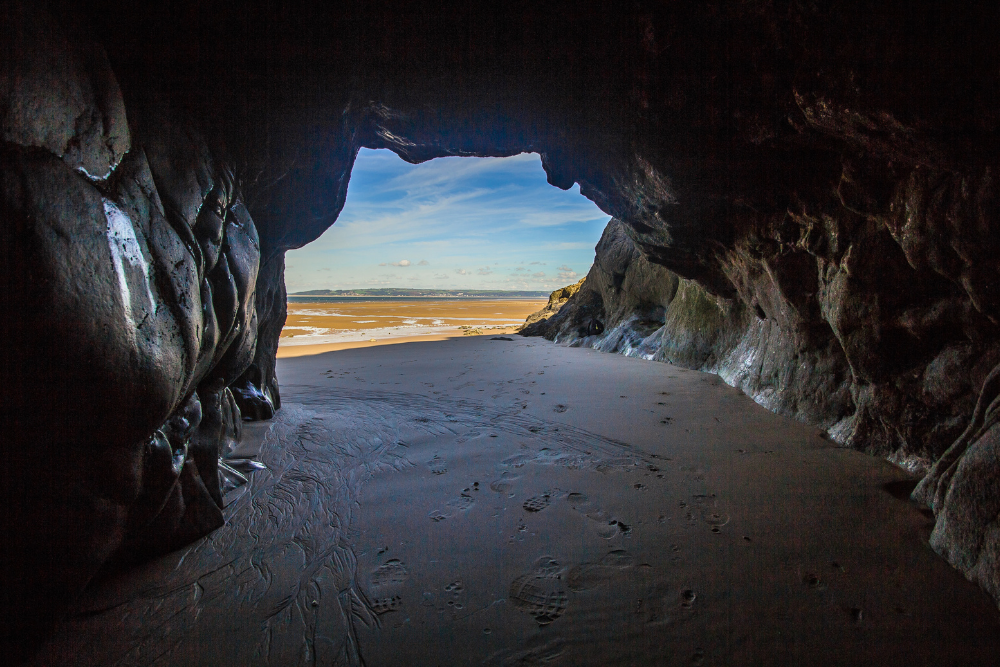Japan is not only known for its breathtaking temples, cherry blossoms, and historic castles but also for its stunning underground landscapes. With a geology shaped by volcanic activity and limestone formations, the country is home to an array of mystical caves and lava tubes, offering visitors a glimpse into a world of stalactites, underground rivers, and hidden chambers.
From the icy depths of Narusawa Ice Cave to the mysterious caverns of Ryusendo, this guide explores Japan’s most fascinating underground caves and lava tubes—perfect for adventurers, nature lovers, and geology enthusiasts.
1. Akiyoshido Cave: Japan’s Largest Limestone Cave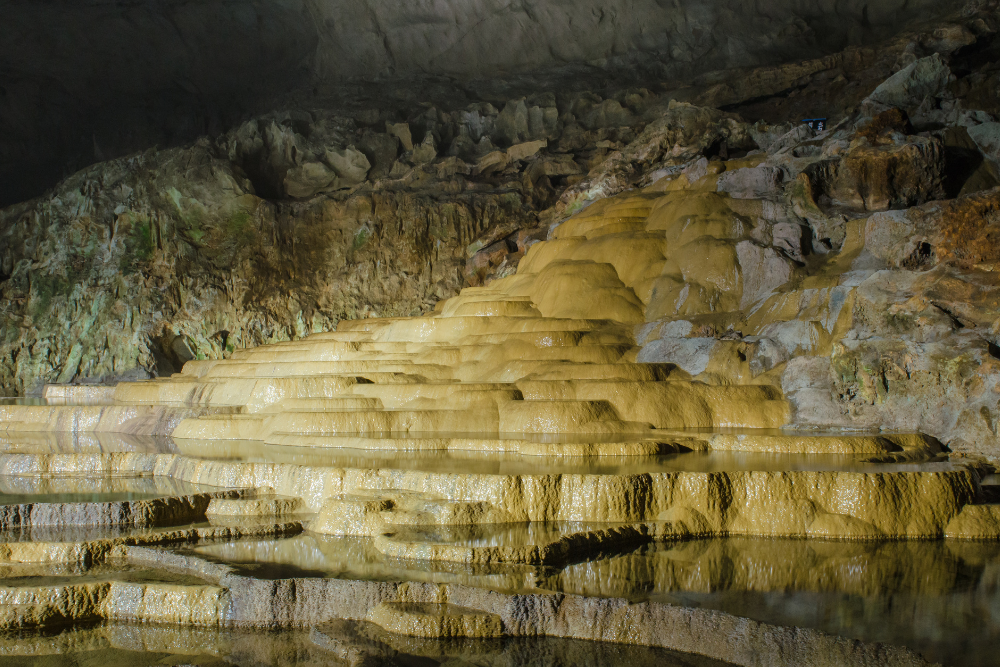
📍 Location: Yamaguchi Prefecture
Why Visit?
Akiyoshido Cave is Japan’s largest and most impressive limestone cave, stretching over 10 kilometers, with a one-kilometer section open to the public. Its enormous underground chambers, flowing streams, and otherworldly rock formations make it a must-visit.
Highlights:
- “Hyakumaizara” (100 Plates): A series of flat, plate-like limestone formations resembling rice paddies.
- Underground River: A crystal-clear river flowing through the cave enhances the mystical atmosphere.
- Akiyoshidai Karst Plateau: The surrounding karst landscape is an attraction in itself, featuring limestone formations above ground.
Best Time to Visit:
- Year-round, as the cave maintains a cool temperature (17°C) even in summer.
2. Ryusendo Cave: The “Dragon Spring” Cave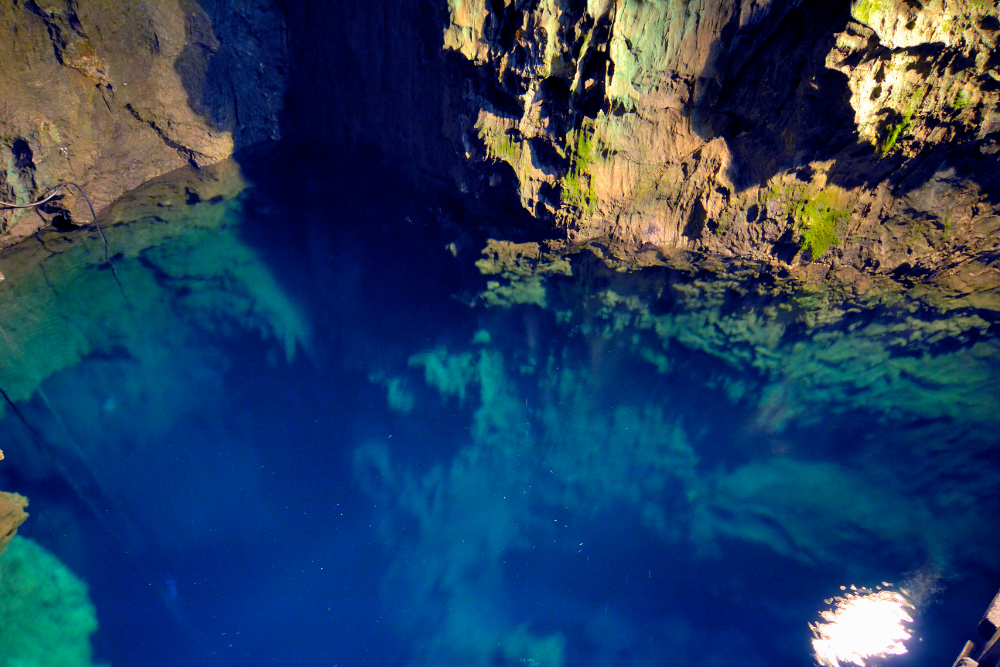
📍 Location: Iwate Prefecture
Why Visit?
Ryusendo Cave is known for its spectacular underground lakes, with some of the clearest blue waters in the world. It is also one of Japan’s longest caves, with over 5,000 meters explored so far.
Highlights:
- Crystal-Clear Underground Lakes: The water’s deep blue hue is mesmerizing, reaching depths of 98 meters.
- Bat Colony: Home to rare species of bats that can be spotted hanging from the cave ceilings.
- Ryusendo Science Museum: Offers insights into the cave’s unique ecosystem.
Best Time to Visit:
- Spring and summer for the best water clarity.
3. Narusawa Ice Cave: A Natural Ice Wonderland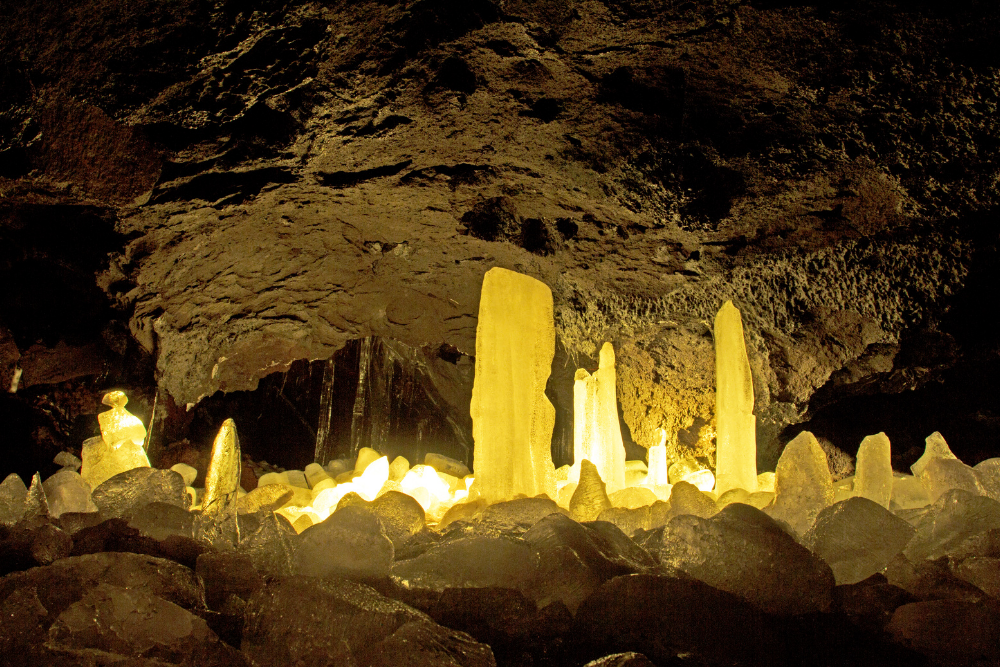
📍 Location: Yamanashi Prefecture (near Mount Fuji)
Why Visit?
Formed by lava flows from Mount Fuji, the Narusawa Ice Cave maintains a frozen interior year-round, even in the heat of summer. The icicles and ice pillars inside make it one of the most surreal cave experiences in Japan.
Highlights:
- Year-Round Ice Formations: Giant ice pillars reaching several meters in height.
- Lava Tube Formation: Created by an ancient volcanic eruption 1,150 years ago.
- Nearby Wind Cave: Another lava cave just a short walk away, known for its wind-cooled tunnels.
Best Time to Visit:
- Summer, to escape the heat and experience the cool underground air.
4. Fugaku Wind Cave: Fuji’s Hidden Lava Tube
📍 Location: Yamanashi Prefecture (near Mount Fuji)
Why Visit?
Fugaku Wind Cave, another lava tube near Mount Fuji, was historically used as a natural refrigerator to store silkworm cocoons. Today, it remains a cool and eerie cavern with unique lava formations.
Highlights:
- Cold Airflows: The temperature remains around 3°C even in summer.
- Lava Shelf Formations: Distinct rock formations created by lava flow patterns.
- Easy Exploration: A low-humidity cave with well-maintained pathways.
Best Time to Visit:
- Summer, when the cool air is refreshing.
5. Okinawa’s Gyokusendo Cave: A Subtropical Underground World
📍 Location: Okinawa Prefecture
Why Visit?
Gyokusendo is Japan’s second-longest cave, with over 5 kilometers of tunnels, though only 850 meters are open to the public. Its stunning stalactites and emerald-blue underground pools make it a must-see in Okinawa.
Highlights:
- 1 Million-Year-Old Stalactites: A breathtaking underground landscape formed over millennia.
- Crystal-Clear Underground River: Shimmering blue water runs through the cave.
- Okinawa World Theme Park: Includes traditional Ryukyu cultural experiences and snake exhibits.
Best Time to Visit:
- Year-round, as Okinawa’s tropical climate makes the cool cave refreshing anytime.
6. Hida Great Limestone Cave: A Samurai’s Hidden Retreat
📍 Location: Gifu Prefecture
Why Visit?
Located in the Japanese Alps, Hida Great Limestone Cave features intricate rock formations and underground waterfalls. It is also historically linked to samurai legends, as warriors once used it as a hiding place.
Highlights:
- Samurai History: The cave is rumored to have sheltered warriors during battles.
- Underground Waterfalls: Unique for a limestone cave.
- Stunning Stalactites: Some of the longest stalactites in Japan.
Best Time to Visit:
- Spring and summer, when the temperature contrast with the outside is most enjoyable.
7. Tottori Sand Dunes Conan Cave: Japan’s Most Mysterious Cave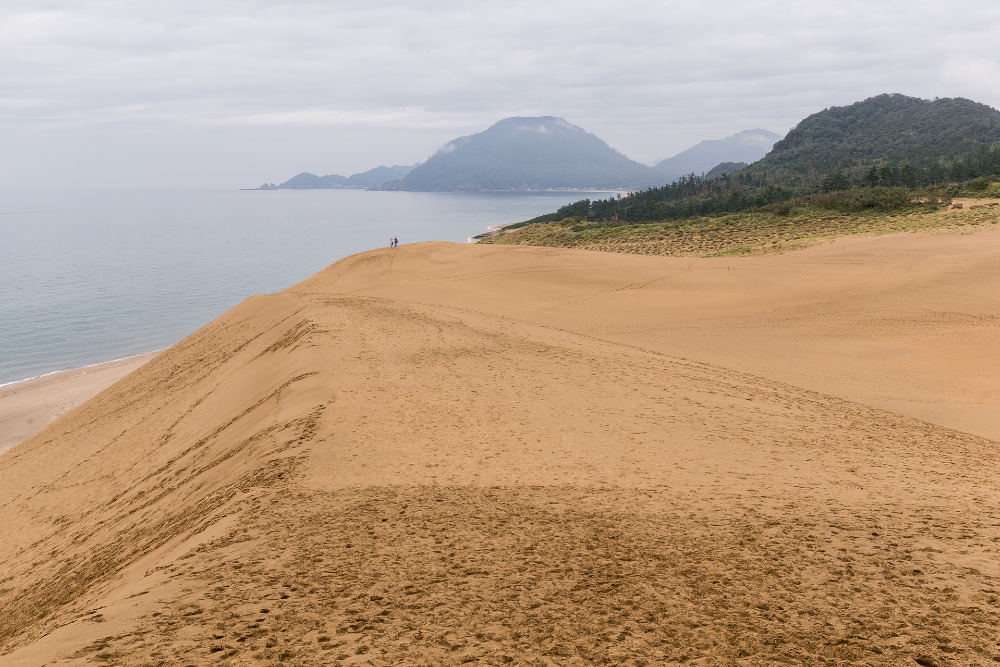
📍 Location: Tottori Prefecture
Why Visit?
This cave, located near Tottori’s famous sand dunes, is unique because it was formed within a sand dune system. It also has ties to Detective Conan, the famous Japanese manga, with themed experiences for fans.
Highlights:
- Sandstone Formations: Unlike other caves, this one features soft sandstone tunnels.
- Detective Conan Theme: Engaging activities inspired by the manga.
- Tottori Sand Dunes: A chance to combine cave exploration with a visit to Japan’s only desert-like landscape.
Best Time to Visit:
- Spring and autumn for comfortable weather.
8. Blue Cave in Okinawa: A Spectacular Marine Grotto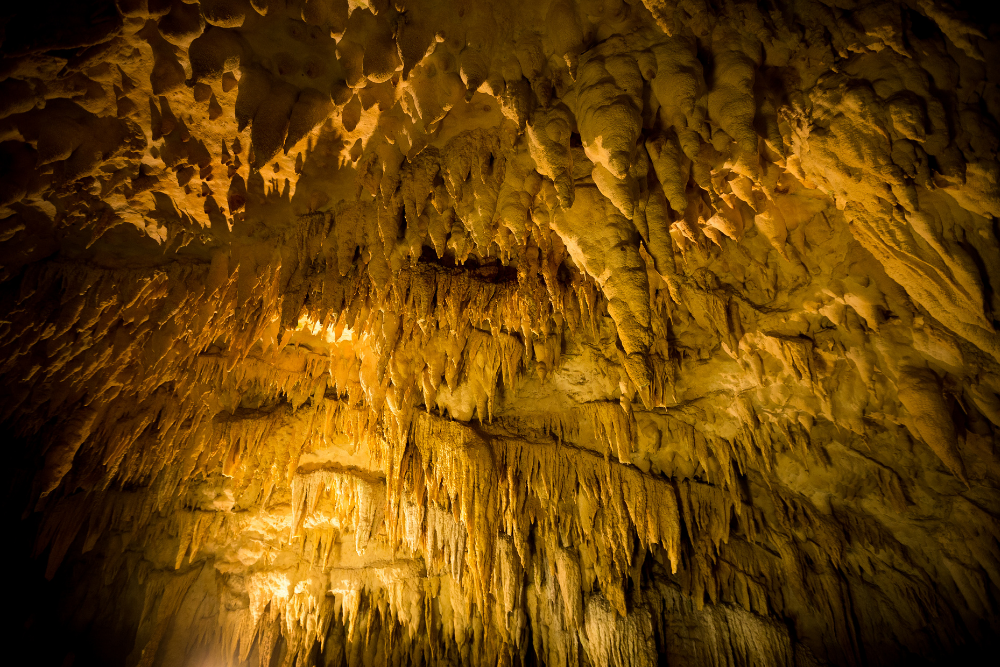
📍 Location: Okinawa Prefecture
Why Visit?
Unlike traditional underground caves, Blue Cave in Okinawa is a marine cave, famous for its glowing blue waters. Snorkeling or diving here offers an experience unlike any other in Japan.
Highlights:
- Bioluminescent Glow: Natural light creates an intense blue reflection in the cave.
- Snorkeling & Diving: The best way to experience the cave is underwater.
- Tropical Marine Life: Home to colorful fish, coral, and unique marine species.
Best Time to Visit:
- Summer for the clearest waters.
Conclusion
Japan’s underground caves and lava tubes offer a fascinating journey through time, shaped by volcanic eruptions, geological shifts, and the passage of millions of years. From the icy depths of Narusawa Ice Cave to the enchanted blue waters of Okinawa’s marine caves, each destination reveals a different aspect of Japan’s natural wonders.
For those seeking adventure beyond the usual temples and shrines, these hidden subterranean worlds provide a unique and unforgettable experience.



